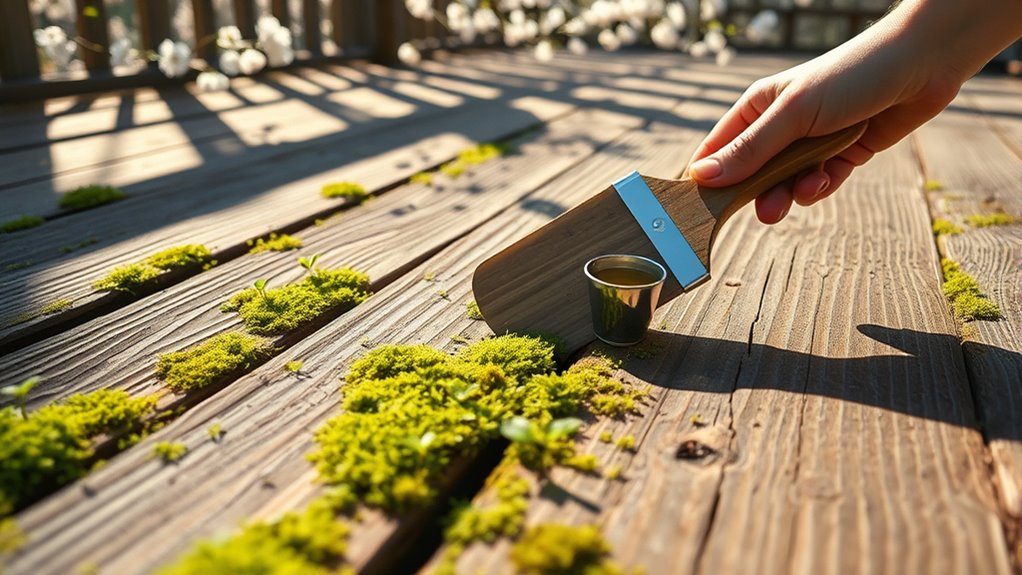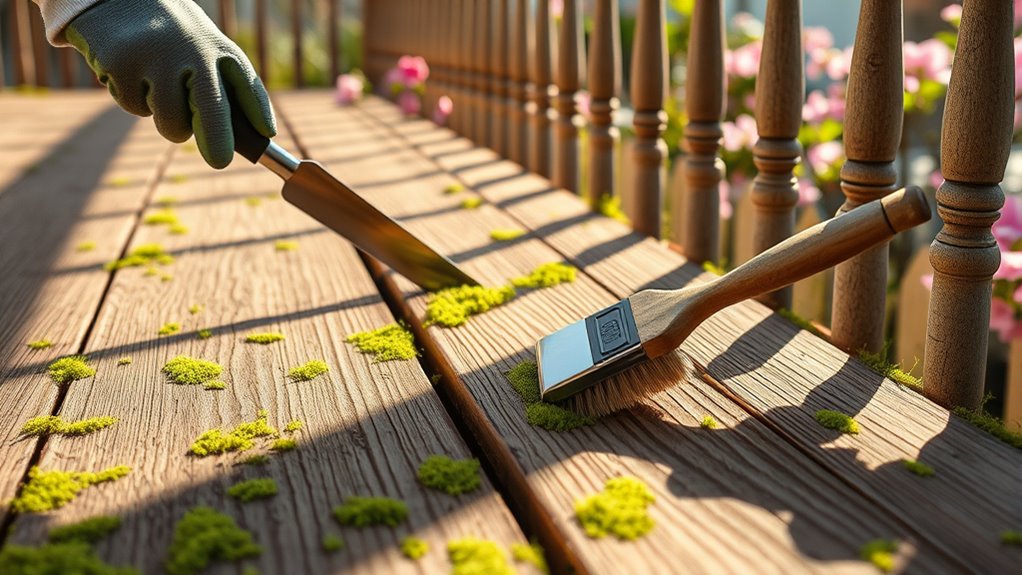In spring, give your wood surfaces a thorough clean using mild soap and water, inspecting for winter damage like cracks or warping. Reapply protective sealants suited to your wood type to prevent moisture intrusion and extend its lifespan. Check for pest signs and tighten loose joints on outdoor furniture or decks. Adapting your care to local climate factors helps maintain dry, healthy wood. Keep these tips in mind—and discover more ways to protect your wood all season long.
Key Takeaways
- Clean wood surfaces thoroughly with mild soap and water to remove dirt and debris accumulated over winter.
- Inspect for winter damage like cracks, warping, or splitting, especially in exposed areas.
- Reapply protective sealants suited for outdoor or indoor wood to shield against spring moisture and pests.
- Check and tighten loose joints or replace damaged parts on furniture and structures for safety and stability.
- Monitor for insect activity and treat wood with insect-repellent chemicals if signs of pests are present.

Seasonal changes bring unique challenges to maintaining the durability and appearance of your wood surfaces. As winter gives way to spring, you need to adjust your wood care routine to address the specific issues that have accumulated over the colder months.
Seasonal shifts demand tailored care to preserve your wood’s beauty and strength.
The first step is to clean your wood surfaces thoroughly. Use a mild soap mixed with water to gently remove dirt, grime, and any residues left from winter weather. Avoid harsh chemicals, as they can strip the wood’s natural oils and cause damage. Unstained wood is especially vulnerable to environmental damage due to the lack of a protective barrier, so thorough cleaning helps to prepare the surface for further protection.
Once clean, inspect your wood for signs of winter damage such as cracking, warping, or splitting. Cold temperatures and moisture can weaken the wood, so look closely at all surfaces, especially in areas exposed to snow and ice. Additionally, understanding the contrast ratio of your wood’s finish can help you choose the best protective products to enhance its appearance and longevity. Regularly testing the moisture content of your wood can also provide valuable insight into its current condition and help prevent future issues. Incorporating moisture meters can give you more precise readings and better inform your maintenance efforts.
After evaluating the damage, it’s essential to take preventive steps to protect your wood from the upcoming seasons. Applying a protective finish or sealant can help shield your surfaces from UV rays, moisture, and temperature fluctuations.
Choose a product formulated specifically for your wood type and suited for outdoor or indoor use, depending on your needs. Proper sealing not only extends the lifespan of your wood but also helps maintain its appearance.
Additionally, treat your wood with insect-repellent chemicals, especially if you notice signs of insect activity or if your area is prone to pests. Raising temperatures and the return of insects mean you should take proactive measures before any infestations take hold.
Spring is also the perfect time to perform structural checks on your wood features. Ensure that all outdoor furniture, decks, or wooden structures are stable and secure. Tighten loose joints, tighten screws, and replace any damaged parts.
Doing so prevents accidents and further deterioration. As you prepare your wood for the more active months ahead, consider sealing any gaps or cracks that could trap moisture.
Managing moisture effectively is key to preventing swelling, warping, or rot.
Finally, stay vigilant about environmental factors. Understanding your local climate and weather patterns can help you tailor your care routine. For example, if your area experiences frequent rain or high humidity, you’ll want to choose products that enhance breathability and allow moisture to escape. Incorporating climate considerations into your maintenance plan can significantly improve your results.
Regular maintenance, including inspections and timely reapplication of protective coatings, will keep your wood looking great and functioning well. By addressing these spring-specific needs early, you set the stage for a durable, beautiful wood surface that withstands seasonal challenges year-round.
Conclusion
By following these simple spring maintenance tips, you’ll keep your wood looking stunning and lasting for years to come. Regular care prevents weather from turning your beautiful wood into a weathered ruin—like turning a masterpiece into a mere shadow of its former glory. So, grab your supplies, get outside, and give your wood the love it deserves. Trust me, your future self will thank you when your wood stays vibrant and resilient through every season to come!








